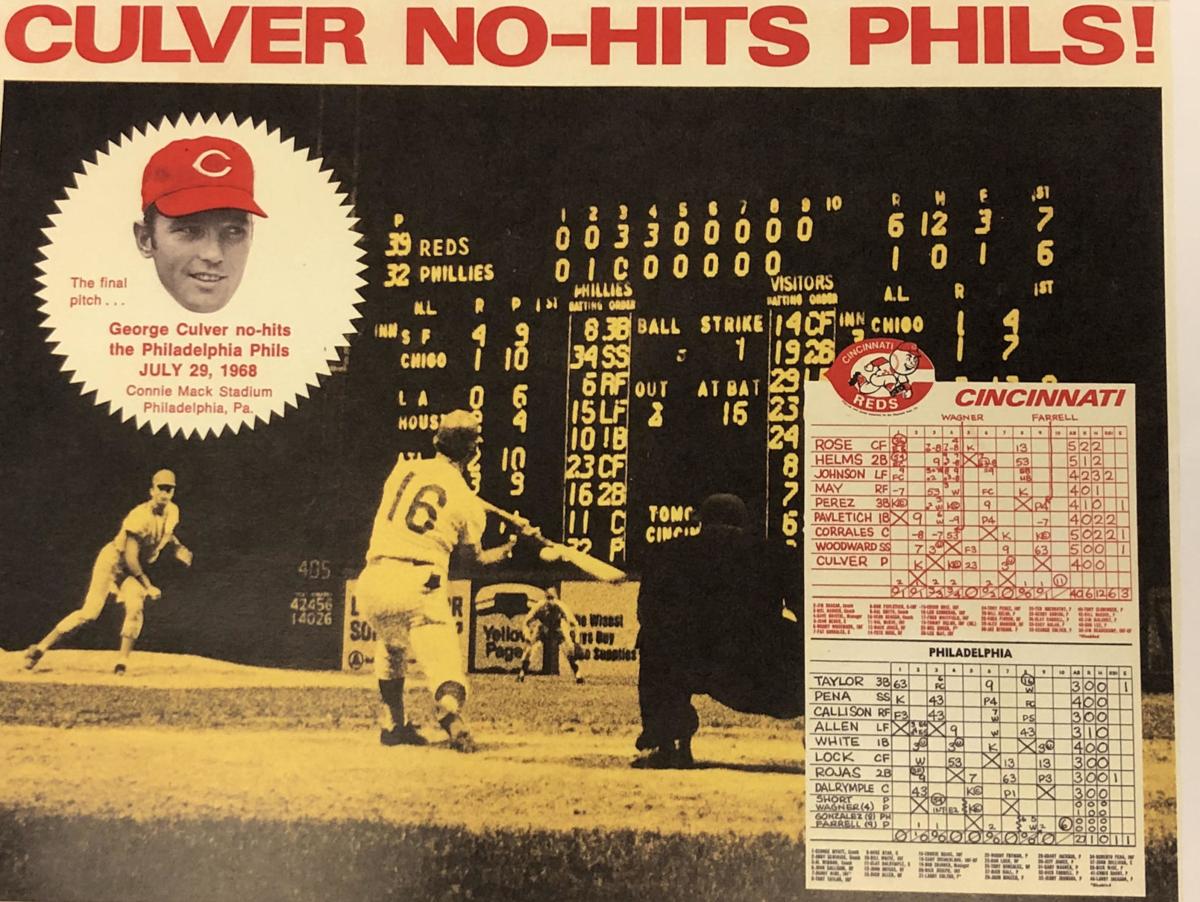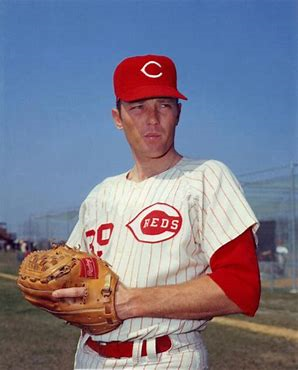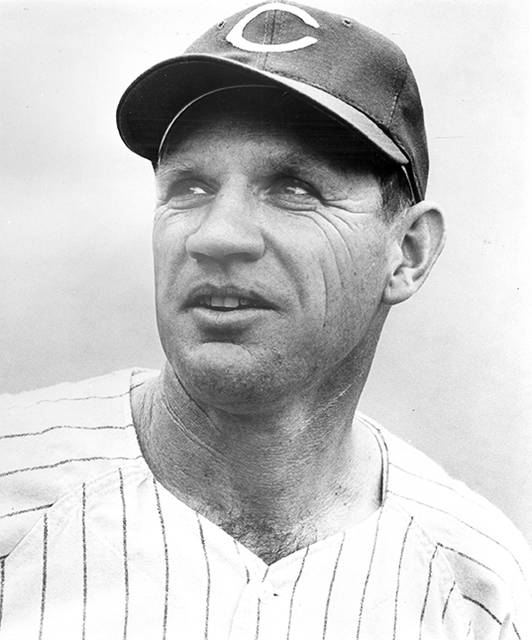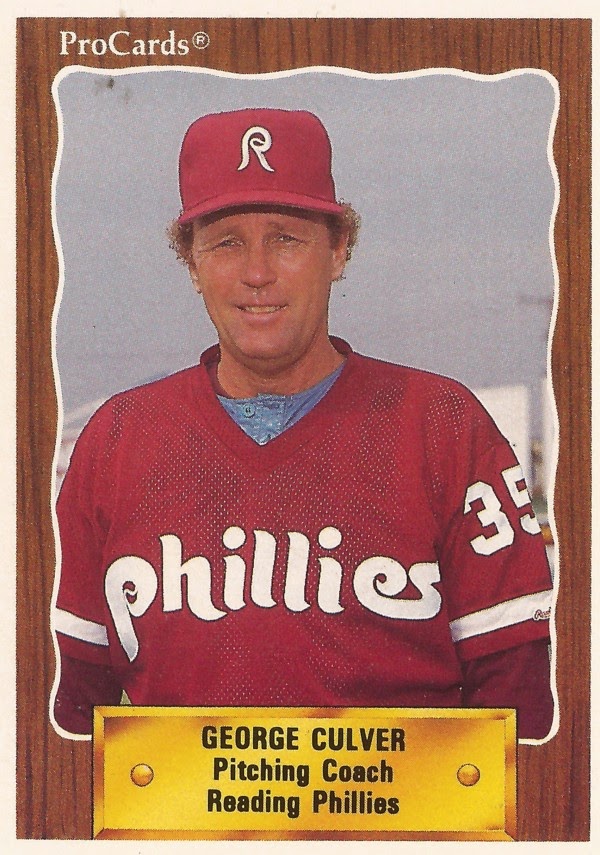A no-hitter and so much more
Fifty years ago – July 29, 1968 – Reds pitcher George Culver threw a no-hitter against  the Phillies at Connie Mack Stadium. (See the story about the game here.)
the Phillies at Connie Mack Stadium. (See the story about the game here.)
“Nolan Ryan did that seven times; maybe it got boring to him. But it was exciting to me,” Culver said in a recent interview.
He’s proud of the no-hitter, but it was not the biggest thrill of his career; and he wants to be remembered for more than one glorious night in Philadelphia.
Culver pitched nine seasons in the major leagues (1966-1974), and he had a 30-year career in baseball after his playing days as a pitching coach, manager, and minor-league coordinator. He has also worked tirelessly to help others in the Bakersfield, California area, raising large sums of money for various baseball programs and to help children.
“I played in a great era.” — George Culver
“Seeing your name on that locker every day for nine years – that was a thrill!” he exclaimed. “Just to make it is an incredible feat. Anything that happened after that was gravy.”
“I played in a great era,” he continued. “I played with or against something like 50 Hall of Fame players. Every day at the ballpark, you might be pitching against two or three future Hall of Famers.”
Culver was signed by the Yankees as an amateur free agent at age 19, May 9, 1963. He was 7-6 with a 2.07 ERA in 22 appearances (19 starts, three shutouts) covering 139 innings in A-ball.
But after that promising rookie season, he was selected by Cleveland in the first-year player draft December 2, 1963. During the next three seasons in AA and AAA, he was a combined 39-29 in 100 games, of which 86 were starts.
He was called up to Cleveland in September 1966, where a big surprise awaited the  longtime starting pitcher:
longtime starting pitcher:
“They got the idea that I was a closer-type guy,” he said. “I had no experience at that. It was a mistake on their part.”
In 1967 with Cleveland, he set a then-rookie-record for appearances with 53 – all but one of which were in relief.
“I didn’t like relief,” he said. “But you do what you have to do to stay in the big leagues.”
Culver was on the move again after the 1967 season, when he was traded with Bob Raudman and Fred Whitfield to Cincinnati for Tommy Harper.
“When I got to Cincinnati, [manager] Dave Bristol had seen me start in the minors,

and he said, ‘you’re a starter.’”
“But at the start of the 1968 season, we were short of pitchers because of injuries, so I had to pitch relief and start,” he said. Culver pitched a career-high 226 innings that season, making 35 starts and pitching in relief seven times.
“My 226 innings was 35th in baseball that year,” he said, laughing. “It shows you how much the game has changed.”
But there was a price to be paid for such a heavy workload.
“[1968] took a lot out of me. Next year I was still doing both [starting and relief] and I got hepatitis, so I sat out about half the year. Came back late in the year, and I was still weak.”
Culver pitched in 32 games in 1969, only 13 of which were starts. He was 5-7 with a 4.26 ERA and four saves.
“Then Sparky Anderson got the manager’s job, and he traded me to the Cardinals [for Ray Washburn],” Culver said. “The Cardinals made me a starter, and I was doing fine until I hurt my arm, so they put me in the bullpen.”
Culver was, in fact, the Cardinals’ Opening Day starter in 1970, “and I was a hero. But then I started having arm problems.”
Indeed, Culver never started a major-league game after the 1970 season.
“You do what you have to do to stay in the big leagues.”
— George Culver
“Then the Cardinals traded me to Houston, and Houston never gave me a chance to start,” he remembers. “They just put me in the bullpen. I was a reliever from then on, even though I asked to start and wanted to start.
“It just never worked out. Houston had a really good starting staff in those days: Larry Dierker, Don Wilson, Denny Lemaster, and some young kids who were good.”
His chances to be a starter didn’t improve when the Dodgers purchased his contract at the end of spring training in 1973.
“I went to the Dodgers in 1973, and they had Don Sutton and Tommy John and Claude Osteen. No chance to start there, either,” he said. He made 28 relief appearances for the Dodgers, and the Phillies claimed Culver off waivers in August of that season. He was 3-1/4.82 for Philadelphia, and Culver split the 1974 season between AAA and the majors.
1974 was his final major-league season. He pitched in AAA and in Japan before retiring.
What was it like to pitch for so many organizations? And did it bother him to be traded so often?
“When you get traded that many times, you’re kind of hurt because you lose your friends,” he said. “It’s like changing schools. I changed schools a lot when I was a kid, and that kind of prepared me.
“It hurts because you think you’re not wanted, but then you think about it and realize someone else does want you.”
Still, Culver sees his somewhat-nomadic playing career in positive terms.
“I’m glad it happened that way, because I was kind of a mediocre player — the only thing I missed was being on a championship team – but I got the chance to play with a lot of great players and managers.
“Red Schoendienst, Leo Durocher, Walt Alston, Tommy Lasorda when he was a coach — I was able to brush up against a lot of Hall of Fame guys.”
He has a special place for his manager in Cincinnati, though.

“Dave Bristol was like one of the guys. We had so much fun with him,” Culver said with a laugh. “He was a players’ manager, but he could be tough when he had to be.
“He was so enthusiastic, and a great guy to play for. My favorite manager, ever.”
— George Culver, on Cincinnati manager Dave Bristol
Culver noted the self-reliance players had to have during his MLB playing days.
“I don’t remember a coach ever helping me with anything,” he said. “But that’s not a knock on the coaches. Coaches were a bridge to the manager; they didn’t do a lot of instruction. You had to do it on your own.”
“I once lost a game in Cleveland, and I was in the shower when the pitching coach told me I should have thrown a curve ball to get a certain hitter out, instead of what I threw him.
“I didn’t even have a curve ball then.”
So what to do?
“I learned from other hitters and veteran pitchers. I learned a lot from [Dodgers pitcher] Claude Osteen. They would find things pitching coaches never did,” he said.
“The Dodgers were the first team I played for who used video,” he recalled. “I would go in at 1:00 and watch video. I studied it religiously. Now, they study video over and over.”
After he retired as a player, Culver “worked locally with some kids in Bakersfield,” he said. He also met his future wife, Rosie, whose son was a local high-school player.
A second career in baseball was just beginning.
“In 1978, the guy who owned the Bakersfield team in the Cal League called and asked me to be the pitching coach. I said, ‘No, but I will be the manager.’”
“The guy said, ‘That’s better yet. You’re the manager.’”
“I got excited about managing,” Culver said. “It was fun. But after a year, they changed ownership/management.”
“Then in 1981, Ron Clark — a buddy who worked for the Phillies as their AA manager – asked if I wanted to be his pitching coach. I said, ‘when do we start?’”
Culver was eventually made the Phillies’ roving pitching coach.
“I wanted to go to AAA with Clark, but they had a veteran pitching coach. And halfway through the year, [Clark] got fired,” Culver said. Not getting that AAA job ended up being a break for him.
“I probably would have been fired with Clark,” he said. “Instead, Tony Taylor became manager, and I was his pitching coach at AAA for three years.”
Culver was then named manager of AA Reading, and they finished first in the  regular season but lost in the playoffs.
regular season but lost in the playoffs.
He worked for the Phillies for 20 years in various roles. He’s particularly fond of the time he spent as minor-league pitching coordinator:
“I loved the pitching-coordinator job, because you’re in charge of all the pitchers and where they play. Who gets sent down, what moves you want to make.
Still …
“It was a great job, but my real love was managing,” Culver confessed. “Ever since I was a little kid, I loved the nuances of the game and the strategy. I really loved managing.”
“Now, some of the players would say I was a better pitching coach than manager,” he laughed. “But I knew pitching and I knew defense and how to position guys; how to get pitchers ready, and when to take them out. And I was my own pitching coach.”
How did he develop his managerial style?
“I learned a lot from everybody,” Culver said. “But Don Blasingame, field coordinator for Phillies, would sit in the stands with me and talk strategy, and I learned a lot from him.”
However, after 20 years with the Phillies and ten years with the Dodgers, Culver realized it was time to end this phase of his baseball career. He had married Rosie, and “my wife, I didn’t want to leave her alone; travel was getting harder,” he said. He was working for the Dodgers, in charge of extended spring training, and he gave each of the system’s pitching coaches a one-week break during the season.
“But in 2010, I woke up one day and said, ‘I’m not gonna do this anymore.’ I told the farm director of the Dodgers August 1, so they would have time to get a replacement for me.
“My last game was in early September against Bakersfield. It was very special, because I grew up in that ballpark as a batboy and shagging balls. I was a baseball rat when I was a little kid.”
Culver wasn’t through with baseball, however. His charity work and fundraising – much of it to benefit the Bakersfield area – was ongoing.
“In the late 1980s, we started The Light Brigade, like Paul Revere,” he said. “The goal was to put lights in stadiums.” Eventually, a number of high schools and colleges got new lights and/or scoreboards as a result, and funds were also raised to help supply needy kids with baseball equipment.
“It’s a lot of fun, and really rewarding,” he said. “I can bring guys I know – guys I played with – here to town for different events, and they are all good to me. They don’t ask for anything. They are here.”
“Through my contacts in baseball, I can do things that benefit the community,” he said.
He’s proud of Bakersfield, and he’s grateful for what the area gave to him.
“I owe this area a lot. This area did a lot for me. If it wasn’t for this area and the coaches I had here, I never would have been what I was as a baseball player for as long as I was,” Culver said.
Culver is especially grateful to his wife of 40+ years.
“I had poor off-field habits,” Culver said. “If I had taken better care of myself, and met Rosie earlier, I would have probably payed another four or five years in the big leagues.
What happened?
“After I got back from Japan, I was on a big downhill spiral,” he said with a trace of sadness in his voice.
“I was totally lost. No contracts; my name wasn’t in the paper anymore. I didn’t know what to do with myself. I had no education; the only thing I knew was baseball. I met her, and that started the ball rolling to get back in baseball.”
“Rosie saved my life.” — George Culver, about his wife of 40+ years
How does he view his career in baseball now?
“I’m satisfied more with the coaching part than as a player,” he said. “You always have regrets as a player. I tell players now, ‘Don’t look back and have regrets. Give everything you have, and you won’t have to say, I could have done better.'”
“But I enjoy what I’m doing now,” he said. “I enjoy my retirement. I play a lot of golf, and I shoot my age on occasion. I still coach a travel team called the Bakersfield Dodgers, and do private pitching lessons.”
George Culver is rightfully proud of what he has accomplished, on and off the field.
“Clemente, McCovey — those guys, it was ‘their’ day every day. I tricked ’em,” he laughed. “I had a great career, even though I was mediocre. I was lucky to play nine years in the big leagues.”
“It was an honor to be on the field with those guys.”
Thanks to George Culver for generously giving his time for this interview.
